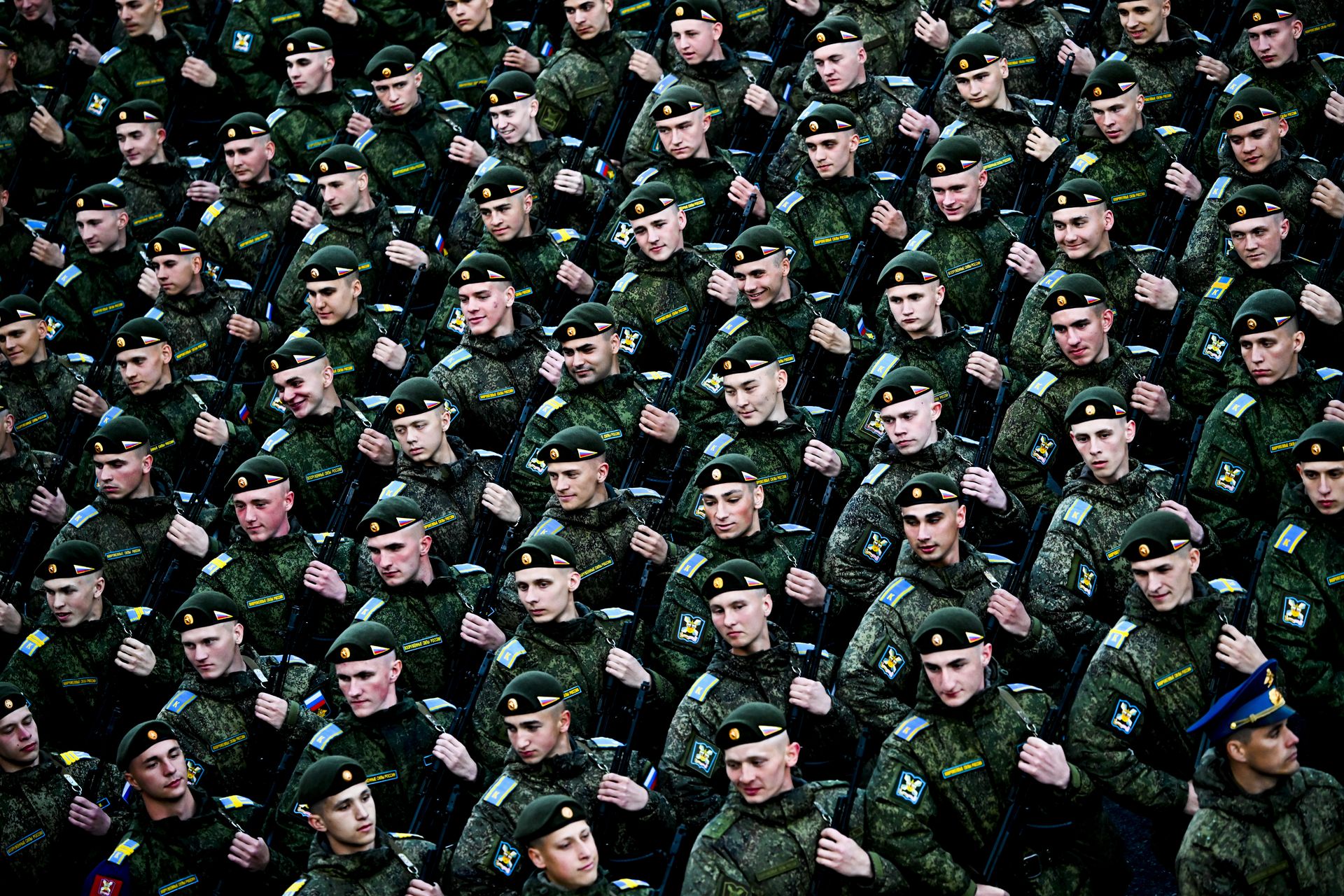
Trump's India tariffs show Russia's allies 'he will act' if Ukraine ultimatums ignored, experts say
U.S. President Donald Trump in Washington, D.C., U.S. on April 2, 2025. (Andrew Harnik / Getty Images)
U.S. President Donald Trump's India tariffs have shown Moscow's allies that he will follow through with his threat to impose secondary tariffs on countries that purchase Russian oil, though doubts remain about the practicalities of implementing them, analysts have told the Kyiv Independent.
Escalating pressure on countries that continue buying Russian oil, Trump imposed 25% tariffs on Indian imports, a policy that came into effect on Aug.1.
"They have always bought a vast majority of their military equipment from Russia, and are Russia's largest buyer of energy, along with China," Trump said on July 30.
Just a day after Trump's announcement, Reuters reported that Indian state refiners had halted Russian oil purchases in the past week. According to Bloomberg, the Indian government instructed oil companies to prepare plans for alternative supplies.
Alexandra Filippenko, an American studies expert, said that while India has maintained ties with Russia, U.S. influence remains far more decisive.
"The American market is, of course, very important for India — far more important than Russia, and far more important than cheap Russian oil," she told the Kyiv Independent.
The decision to impose tariffs on New Delhi came just a day after Trump announced that secondary tariffs targeting Moscow — and impacting its trading partners like China, India, and Brazil — would take effect on Aug. 8 unless a deal to end the war in Ukraine is reached.
If countries like India continue purchasing Russian oil, they could face up to a 100% tariff on exports to the U.S., potentially driving up prices for American buyers and putting pressure on Indian exporters.
"Trump is clearly showing that he's ready to impose tariffs," Filippenko said.
India-Russia energy ties
India hasn't been dependent on Russian oil for all that long.
New Delhi's reliance on Russian crude grew after Moscow's full-scale invasion of Ukraine in 2022. At the beginning of that year, Russian oil accounted for just 0.2% of India's imports.
But as Western nations shunned Russian energy, India capitalized on steep discounts. By mid-2023, Russia was supplying over 2 million barrels of oil per day to India.
In 2025, India overtook China as Russia's top crude buyer by volume, according to the Centre for Research on Energy and Clean Air.


Despite those volumes, Filippenko said India is ultimately more exposed to American pressure than dependent on Russian oil.
"That's why there's real potential for U.S. leverage," she said.
From deal-maker to enforcer
Trump, who had pledged to broker peace in Ukraine within 24 hours of returning to office, has grown frustrated with what he describes as Russia's unwillingness to move forward.
On July 29, he warned that if Moscow failed to take real steps toward peace, the U.S. "gonna put on tariffs and stuff," likely meaning secondary tariffs on Russia.
"What Trump might get instead is higher oil prices and more money for the Kremlin. That's the opposite of what he wants."
The U.S. president aims to weaken Moscow by cutting into its oil revenues, which make up around one-third of Russia's federal budget and are a key source of funding for its war in Ukraine.
Filippenko believes Trump's move on India is meant to signal that he's serious about following through on his promise to impose secondary tariffs.
Will the tariffs work?
While the promise has been made, some experts remain skeptical that Trump's strategy will deliver the intended results.
Sergei Aleksashenko, a U.S.-based Russian economist, said the situation remains complex.
"So far, I don't see a clear alternative for India to replace Russian oil," he told the Kyiv Independent.
Russian opposition politician and energy analyst Vladimir Milov called Trump's secondary sanctions strategy flawed and difficult to enforce.
"It looks like a very complicated scheme, and nobody was ever able to explain how it's supposed to work. They are essentially talking about a full-scale trade embargo on major U.S. partners like China and India," he told the Kyiv Independent.
Milov noted that both countries account for about 80% of Russia's oil exports and are engaged in sensitive trade negotiations with Washington.
"There's no indication that the issue of Russian oil has even surfaced in these negotiations," he said, warning that Moscow could ultimately benefit — a weaker ruble and rising oil prices may actually increase its export revenues.
"What Trump might get instead is higher oil prices and more money for the Kremlin. That's the opposite of what he wants," Milov warned.
Trump's rhetoric has already triggered market reactions. Following his threats, global oil prices climbed more than 3%, the ruble dropped by 4%, and the Moscow Stock Exchange fell over 3%, according to Reuters.
Oleksandr Talavera, a professor of financial economics at the University of Birmingham, said the impact depends entirely on enforcement.
"Trump often makes bold announcements only to backtrack later. So there's political rhetoric here," he told the Kyiv Independent.
He added that while limiting Russian oil sales could disrupt markets, it's unclear whether Trump actually wants oil prices to rise, especially heading into a midterm election.
Talavera noted that tariffs on India mark a concrete step, and warned that if effectively implemented and backed by European enforcement, secondary sanctions could hurt Russia's oil revenues, but only if compliance is strict.
Beijing watches closely
China remains the most sensitive case in Trump's tariff strategy. It is Russia's largest energy customer by value and a major supplier of dual-use components fueling Russia's war machine.
"China is clearly the main beneficiary here — cheap resources from Moscow, and now Russia buys everything from China after turning away from Europe," Filippenko said.

"I don't know how much of a manageable burden that is for Donald Trump," she said.
Earlier this year, the U.S. and China entered a trade standoff, imposing steep tariffs — up to 145% on Chinese imports and 125% on American goods.
Just two months later, Trump announced a new trade deal with China that eased tensions, reducing U.S. tariffs on Chinese products to 55%, while Beijing lowered its duties to 10%.
Still, Filippenko noted that Trump is positioning himself to act if talks stall.
"Trump is showing that if he wants to, he will impose tariffs," she said. "If no one makes deals and no one respects the ultimatums he sets, he'll act."
Note from the author
Hi, this is Tim. Thank you for reading this article. The Kyiv Independent doesn't have a wealthy owner or a paywall. Instead, we rely on readers like you to keep our journalism funded. If you liked this article, consider joining our community today.












